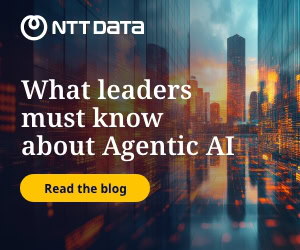If you scroll through mainstream media, there is bound to be a call from government leaders or technology vendors rousing for businesses and the populace to go AI practically every day or so. It is as if AI is a panacea or some kind of digital “messiah.”
The current business landscape, often characterised by turbulent waters and economic uncertainty, demands not just investment in AI but also a commitment to its literacy. True value realisation comes not from throwing vast budgets at opaque systems, but from adopting a smarter, more sustainable, and cost-effective approach. The key is moving past the industry hype to harness AI as an internal tool, one that augments human capability rather than replacing it with unreliable or even rogue agents.

From hype to sustainable literacy
Professor Geoffrey Hinton, often called the "Godfather of AI" and a recipient of both the Turing Prize and the Nobel Prize in Physics, famously said, “The brain sure as hell doesn’t work by somebody programming in rules.”
Therein lies the crux. Traditional AI might have been a “rules-based” system that depended on engineers to code instructions and prompts. But true AI literacy and successful deployment cannot be just coding by coders but a collaborative discipline that takes in both right-brain and left-brain recommendations and builds on them to allow such an AI to learn and adapt, providing strategic insight, just like our human brains. This is the paradigm shift we are beginning to see, and it is a critical concept to grasp as we move forward.
Companies are rushing to spend significant amounts on enterprise-level AI, with the FOMO (fear of missing out) mindset from the boardroom. Yet AI systems remain vulnerable to bias, data poisoning, and the notorious problem of "hallucination." Furthermore, studies show that complex agentic AI often struggles with common sense, social intelligence, and basic propriety, failing to complete a majority of assigned business tasks.
For organisations navigating financial challenges, this high-risk, high-cost investment model is untenable. The better way forward is a strategy focused on sustainability and scalability. This starts with the AI Bootstrap: a simple, cost-effective initial approach designed to generate immediate, measurable internal value without the typical $45,000 median annual expenditure.
RAG and offline systems
The foundation of bootstrapped AI is Retrieval-Augmented Generation (RAG). Unlike traditional, expansive Large Language Models (LLMs) trained on public domain data, RAG taps directly into your organisation’s proprietary knowledge base, such as your own website, documents, multimedia such as audio and video, recordings of meetings and conferences, and intranets. This approach makes the AI highly accurate, contextually relevant, and significantly less prone to hallucination, all while being remarkably cost-friendly. This strategy reduces the initial financial burden to a fraction of the typical enterprise spend, often requiring only modest monthly and upfront investments.
RAG enables business leaders and departmental teams such as finance, human capital, and research and development to securely execute core functions like research, collaboration, and development away from the public eye and to serve the public with open-source or public domain information. This is achieved through a critical two-track system.
Public RAG
The public RAG is an AI bot deployed on your organisational website for customer service and public inquiries, driving traffic and maximising external customer experience (CX).
Offline RAG
Offline RAG are local, proprietary AI applications run directly on users’ devices and within intranets to handle proprietary data. Because these systems run offline and typically feature no telemetry, they safeguard data privacy and prevent data leaks, mitigating the security risks associated with "Shadow AI." This allows departments to safely research sensitive internal documents, collaborate on proprietary development projects, and create strategic and internalised communication without the risk of intellectual property exposure.
Converging content for Web 4.0 survival
To lock in the long-term value of your RAG, I call it ABC, or “AI Bootstrap & Convergence.” Consider bootstrapping rather than spending relentlessly on AI systems, and converge data into a single internal source.
For the RAG system to be effective, an organisation must consolidate all its knowledge assets, such as static web pages, blogs, PDF catalogs, internal wikis, and even transcribed meeting and conference recordings, into a Single Source of Truth (SSoT). This is the crucial act of curation and creation. By ensuring that human experts feed the RAG with clean, verified data, organisations adhere to the “garbage in, garbage out" principle, maximising the AI’s output quality.
Once the content is converged, the final step is to leverage the RAG bot to keep both customers and staff on your platform, protecting your owned assets. As the internet evolves into "Web 4.0," where AI-driven "answer engines" replace traditional search, remaining visible means optimising for Answer Engine Optimisation (AEO) alongside traditional SEO. By building a high-quality, RAG-powered knowledge base on your site, your platform becomes the definitive authority that external AI systems spider and rely upon for answers, preventing invisibility and ensuring brand survival and growth.
Business value realisation in the age of AI is not a matter of budget but of intelligent and bootstrapped strategy to reduce risks and to confront the impending AI bubble with the least financial outlay. The most successful organisations are those that practice robust AI literacy, prioritising sustainable, cost-effective RAG systems that secure proprietary data and leverage converged content to enhance human capabilities and ensure lasting digital visibility.
Think humanities for future-proof AI
To end on a philosophical and yet pragmatic note, Dr. Sebastian Thrun, a computer scientist and roboticist, said, "Nobody phrases it this way, but I think that AI is almost a humanities discipline. It's really an attempt to understand human intelligence and human cognition.” And that is how we should be building and refining current and future AI.





